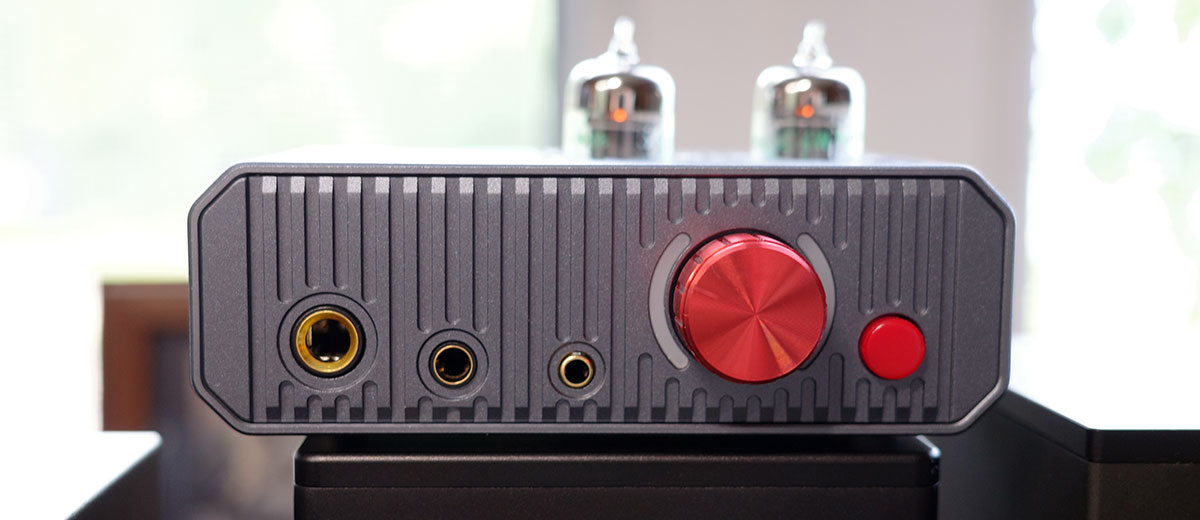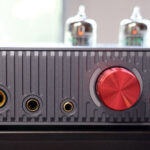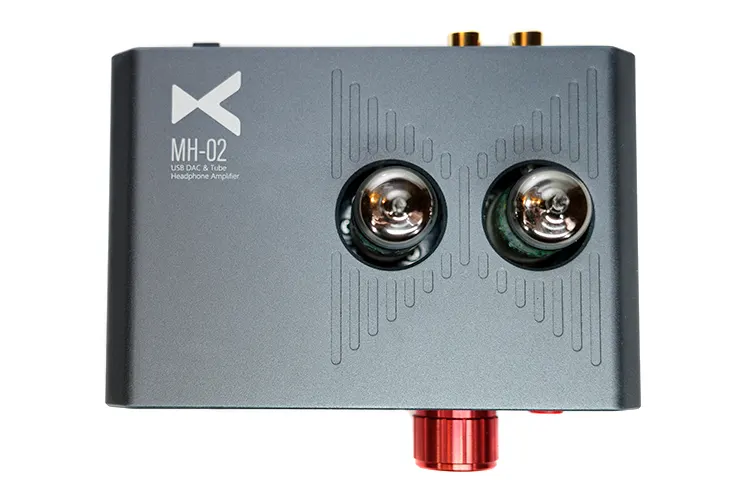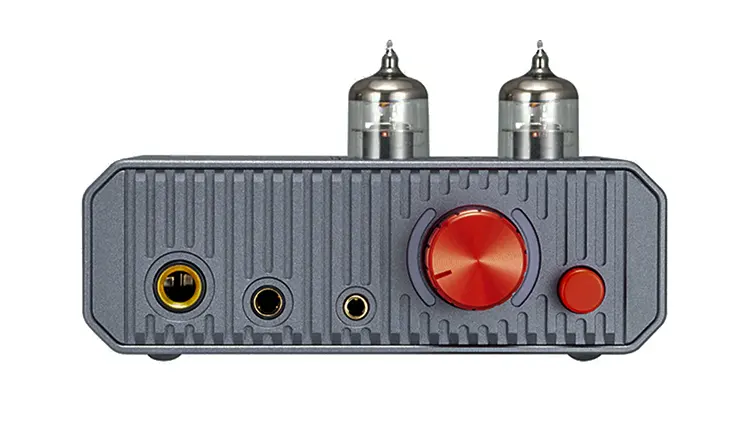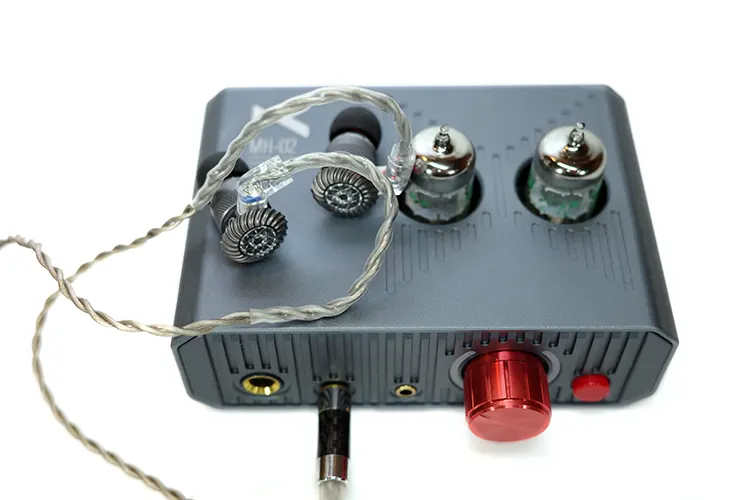Today, Lynn reviews the xDuoo MH02, which is an affordable CS43131-equipped USB-DAC and tube-based 1.3W amplifier for headphone enthusiasts. It is priced at $149.
Disclaimer: This is a sample sent in exchange for my honest opinion. Headfonics is an independent website with no affiliate links or status. I thank Shenzhen Audio and xDuoo for their opportunity.
Click here to read more on xDuoo products that we have previously reviewed on Headfonics
Note that this article follows our current scoring guidelines which you can read in more detail here.
xDuoo has a history of producing moderately priced portable DAC/amps and desktop headphone amplifiers such as the Poke II and the Drop collaboration TA-84.
Usually when they go desktop pure amp[lification there is a solid focus on tube topologies. The recently released $149 MH02 USB-DAC and tube headphone amplifier is no exception.
I have reviewed several of their products with my older TA-30 still seeing weekly use besides that for reviews.
While xDuoo provides affordably priced tubes for their units, they wholeheartedly accept and encourage tube rolling.
My TA-30 sports Sylvania and RCA tubes instead of the stock, so I will report on the stock tube performance and also provide an in-depth report on how it handles a bit of tube rolling in my full review below.
Features
The xDuoo MH02 is a Class A buffered transistor headphone amplifier that uses 6J1 tubes as the pre-amplifier, warming what might be a colder, more sterile sound.
The single CS43131 DAC chip carries a low noise floor that helps isolate any of the typical tube “ping” you might hear when touching the surfaces of the MH02.
The MH02s’ DAC can decode up to PCM 32bit/384kHz and DSD256 natively through the USB input and does provide for MQA but these days, is a feature on its way out.
Providing up to 1300mW on a 32Ω load, the MH02 carries the goods to drive most higher-impedance headphones quite well.
The gain switch can add either 12 dB or 18 dB for headphones which need a higher output to perform well. Since the “normal” output is most likely 12dB, it should be considered the baseline. So, a +6 dB gain between each setting is more realistic.
With a line-out, the MH02 can be used as a pre-amp too for those who want to add another amplifier to the chain. There is also a built-in circuit protector, avoiding that familiar “pop” when turning on a unit such as this that carries tubes.
Design
The MH02 carries a small rounded, rectangular footprint, with the two tubes sticking out of the top adding to the aura. The sandblasted aluminum shell carries “slots” to help dissipate heat as well as give the unit a more industrial look, especially with the gray coloring.
With dimensions of 12 x 7.8 x 4.0cm and a svelte weight of 0.35kg, the MH02 is imminently placeable within most systems or on its own in a constrained space.
I/O
The front carries the volume knob (with blue highlighting around the red knob), the push button for gain, and three headphone jacks in 3.5mm TRS, 4.4mm balanced, and 6.35mm single-ended.
The red volume knob and push button are tasteful in color, adding to the design while also making them easier to see. The understated look is much appreciated.
The back carries dual RCA connections for input and output (such as for a pre-amp setting), and a USB-C in for another source option. The 12v round power connection is low enough not to get in the way of the on/off switch above.
Wired Connectivity
The USB-C to USB-C connectivity allows for use with an Android-based source as well as your laptop or powered speakers, (or two-channel system if it has it).
Less cumbersome than the RCA connectivity, when connected to a DAP it will most likely be used as a Line Out from the source, giving you control of the volume via the MH02.
The RCA out bodes well for use as a pre-amplifier or a direct hookup to your two-channel system as well as going 3.5mm to RCA in from a headphone port.
Controls
The volume knob functions smoothly, and I found that on high gain, even with higher impedance headphones such as the FiiO FT3 350Ω and the AKG 240DF 600Ω I never had to go more than ¾ to attain an acceptable to loud listening level.
I could hear the gain button slightly through the sound when activating, but other than that, the jacks were solid when inserting and removing the headphone jacks.
I also found I could leave a set of RCA cables and USB-C cables connected for easy switching of sources. I did not keep two sources connected at the same time, though.
Packaging & Accessories
The MH02 comes in a larger-sized box, well protected with foam inserts. The box carries an off-white color with black lettering, which looks quite appealing and straightforward.
The contents, while sparse carry what is needed to get you up and running. Of note is the external wall wart for the power pack, which is a 12v setup.
Many manufacturers are moving to separate or at least contained power sources for better isolating mechanisms, and the MH02 does this as well.
The user must provide cables for connectivity, whether that is via the RCA out/in or USB-C. Since most of us have extra cables lying around this is of little concern.
Sound Impressions
All listening was done using the FiiO FT3 350Ω and AKG 240DF 600Ω for headphones, the Spirit Torino Twin Pulse Beryllium, and Campfire Audio’s Solaris 2020 paired with the ddHiFi Air Nyx Pro cable for IEMs.
The sources used were my Macbook Pro and the HiBy R4. I will designate sound differences between the stock tubes and GE 5654 to give you an idea of what tube rolling might do for the MH02.
Summary
Tube amplifiers usually promote a smoother, warmer signature, and the MH02 follows this; but with a level of detail mostly on par with a Class-A amplifier.
There is plenty of power to drive higher impedance headphones mostly with ease, and I rarely had to use the high gain setting.
When using high gain, the midrange is elevated, and enhanced pushing it to the forefront, but without losing clarity on both ends too much.
The treble reach is smoothed by the tubes, with the bass digging a bit deeper, though without the familiar elongated, thumping notes typical of a tube amplifier.
Limited by the stock tubes, the sound comes across as fairly typical of a tube amplifier, but without the overall smoothness often associated with such a unit.
Timbre
Using the stock tubes, the sound comes across as a bit flatter than I would prefer from a tube amplifier, but still within reason provides a richness to the sound, paired with good clarity.
I found that the recording played a large part in what was heard, more so than with other more forgiving units.
The low-end, while enhanced a bit came across as thinner than a usual tube amplifier with the stock tubes. There is only so much that can be done, but as an introduction to the “technology,” the MH02 presents an adequate introduction.
The upper reaches are rolled but without suffering too much in the detail department. Adequate note weight works in the favor of the top end giving a warmth while presenting a fairly accurate note, too.
Note pace, coupled with the slightly enhanced note weight carried on without becoming slow or dragging. The attack seemed to elongate the notes on the front side, which could be a valid reason for the pace.
The sound does come across cleanly due to the Class-A section and represents a good compromise or rather union of both tubes and solid-state tuning.
The sound does not come across as warm as the TA-84 OTL due to the combination working here, and I found myself understanding that this could be a gateway into more expensive tube amplifiers.
Staging & Dynamics
The soundstage came across as fairly cubic without any meaningful extensions in the three dimensions. Not cramped, and not expansive; the soundstage comes across like Goldilocks as in “just right.”
This allowed notes to be defined fairly well in layers and spatially. The quality took on the feel of a fairly intimate concert stage as opposed to a larger venue.
The slower attack of notes (slower transients) added dynamically to the presentation with good heft to the notes without becoming overly rich.
The counter to that was a slight loss in detail retrieval but made up somewhat by the Class-A amplifier. Yes, Class-A amps usually carry a richer, warmer signature but when paired with the tube amplifier here helps to give more detail to the note weight.
The MH02 is not as resolving as the TA84 OTL but this is another case of looking at the whole as opposed to the individual parts.
Male vocals come across with added weight but a slightly veiled sound compared to female voices.
Those female voices carry a slightly darker, more sumptuous sound to them, especially paired here with the Class-A amplifier. This is an example where the darker tonality of both helps give a certain richness to the music.
Click on page 2 below for my recommended pairings and selected comparisons.

